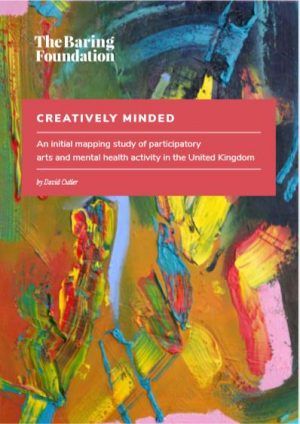Just as the first lock down began in March 2020 we were considering how to start our new programme funding arts organisations which creatively engage with people with mental health problems. The arrival of COVID-19 meant we had to rethink our early plans. We thought how to construct our first open funding round in this new context and decided that we wanted:
- A high success rate. Our open round funding competitions are normally highly competitive turning down between up to 9 in 10 applications. So, we made grants small (up to £12,000) and to a restricted group of arts organisations.
- To prioritise ‘specialist’ arts organisations. In the absence of other criteria, it seemed sensible to concentrate on arts organisations that saw arts and mental health work as their core.
- A simple process. To increase the ease of application we used eligibility criteria – even so, these criteria were subject to many questions by potential applicants.
- Unrestricted funding. This seemed the least complicated and most flexible way of funding.
This approach was specific to the circumstances at the time. It resulted in 143 applications and 87 grants. With most grants completed, we have now conducted a short survey of our grant partners. We now want to report back on how the grants were used and how they felt about the funding.
Given that the grants were unrestricted, there was no real pattern in their use with many organisations using them for running or core costs, but others choosing themselves to restrict the grant to one or more projects.
There was a really strong response from grant partners that they particularly appreciated grants being unrestricted. We accept and understand this. So, the question arises – why don’t we always given unrestricted grants? The direct answer is that there are many occasions where we want our funding to drive a particular change or development in a sector. We can’t do this through unrestricted funding. We believe that we are prioritising changes on the basis of good evidence from the field. An example is the funding we have been giving to encourage greater ethnic diversity in the arts and mental health field which was based on careful research.
Grant partners by and large liked our style, which I would characterise as engaged but respectful of the time pressures on artists. We want to meet you and listen to your views and to become better informed, but we don’t want this to get in the way of you doing the job. We try to feed back what we are learning through meetings, blogs like this and publications. This will continue.
It also became clear, though, that we aren’t clear about what happens next after a grant. Will we continue to support you with funding? Our overall intention is to stay in the field of arts and mental health for a long while as we think there is a great need for support by funders. Within that overall theme though, our priorities will develop as we perceive new ones. We will operate joint funds with other funders, as is already happening with the Greater London Authority, Arts Council Wales and Creative Scotland. There won’t be a standard pattern – it will change. When we have open rounds, we will be clear who can apply and it is rare that previous grant applicants won’t be able to apply.
Thank you to all for your responses. Please keep telling us how to improve – it’s the only way we will!
To see organisations supported under this funding round, see our 2020 Report on Activities (page 21).
Feature image: Recover in Welwyn Garden City, one of our 87 first grant partners, who produce beautiful works of art from old and donated furniture. Find out more
